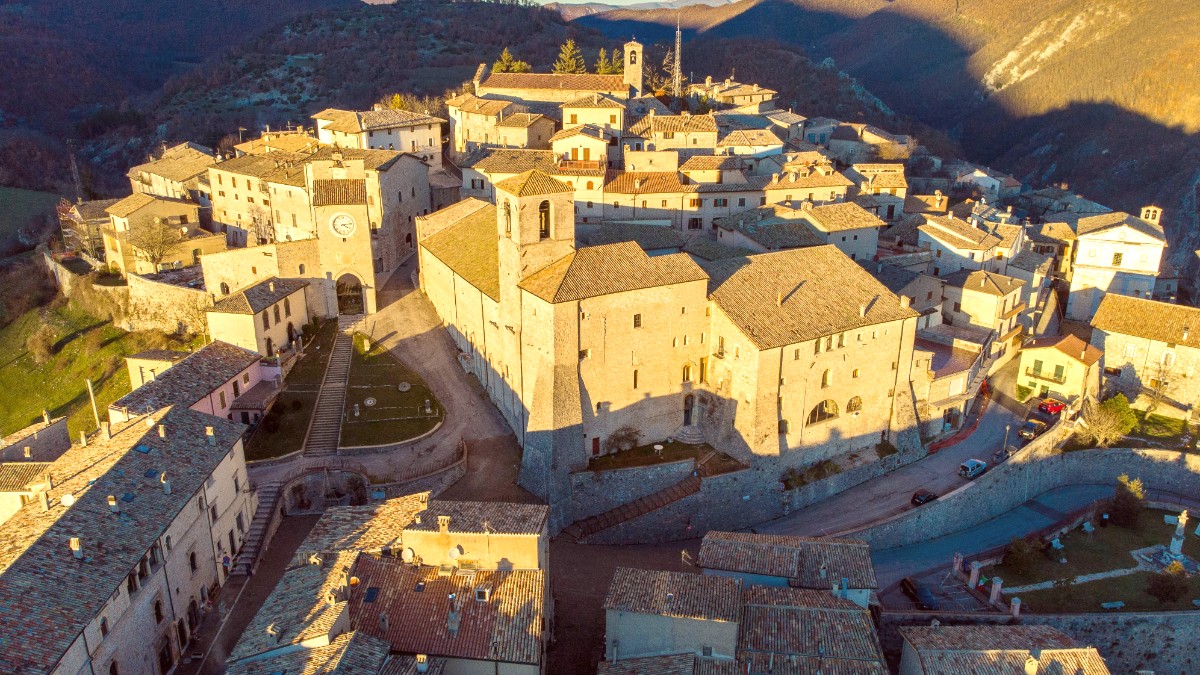
Umbria And Le Marche, Italy
Perugia, an inland, hilltop city in central Italy, experiences four distinct seasons, each holding a different appeal.
Perugia's inland, elevated position means it has more defined seasonal changes than coastal areas of Italy.
High Season (June-August): Warm and sunny weather, city buzzes with energy, all services operate fully. Attractions become crowded, accommodation and flight prices reach their peak. Intense heat makes midday exploration uncomfortable.
Shoulder Season (April-May, September-October): Pleasant temperatures, fewer crowds, reasonable prices. Stunning natural scenery. Weather can be unpredictable, with higher rain chances. Some smaller businesses might have reduced hours.
Pros and Cons
Quieter, more authentic local experience. Minimal crowds. Lower accommodation and flight prices. Cozy atmosphere in cafes and trattorias.
Cold weather, higher chance of rain or snow. Shorter daylight hours. Some businesses may close for the off-season.
Best experiences
Spring (April-May) and Autumn (September-October) offer comfortable temperatures.
Late Spring (May) and early Autumn (September) for pleasant conditions.
Specific Events
Plan your journey for July to experience Europe's premier jazz festival.
October is the month for Perugia's renowned international chocolate festival.
Italy is a member of the Schengen Area, which simplifies travel within many European countries. Non-EU/EEA/Swiss citizens from specific countries require a Schengen visa for stays up to 90 days within any 180-day period. Citizens from many countries, including the United States, Canada, Australia, and New Zealand, do not require a Schengen visa for stays up to 90 days. For stays exceeding 90 days, or for study or work, a national long-stay visa (Type D) is necessary.
Beginning in mid-2025 (this date can change), visa-exempt travelers obtain an ETIAS authorization online. This is not a visa; it is a pre-travel authorization similar to those used in the US (ESTA) or Canada (eTA). The application is straightforward and quick, but travelers complete it before departure.
Valid for at least three months beyond your planned departure date from the Schengen Area, issued within 10 years.
Proof of financial means to cover your stay (bank statements, credit cards).
Proof of your departure from the Schengen Area.
Comprehensive travel insurance is mandatory for Schengen visa applicants, recommended for others.
Confirmations of hotel bookings or an invitation letter.
Costs vary based on your travel style, from a lean backpacking journey to a luxurious escape.
The official currency in Italy and the Schengen Area is the Euro (€, EUR). ATMs ("Bancomat") are widely available, offering favorable exchange rates. Major credit and debit cards (Visa, Mastercard) are widely accepted.
These ranges help plan your spending in Perugia, covering various categories from accommodation to local transport.
Additional ways to manage your budget and enjoy Perugia cost-effectively.
Italy has a modern healthcare system, and Perugia is generally a safe city for visitors.
No specific vaccinations are necessary for entry into Italy for most travelers. Check your routine vaccinations with a healthcare professional.
Sunburn and heatstroke in summer. Use High-SPF sunscreen, wear hats, stay hydrated.
Tap water is safe. Food hygiene standards are high. Practice good hand hygiene.
Emergency Number: 112
This universal European number reaches ambulance, police, and fire brigade. Perugia has a major public hospital, Ospedale Santa Maria della Misericordia, for emergency services.
Pharmacies ("Farmacia," green cross sign) provide advice for minor ailments and over-the-counter medications. Many pharmacists speak some English. EU citizens carry your European Health Insurance Card (EHIC).
Always carry a small card with your accommodation details, any known allergies, and emergency contacts in English and Italian.
The main concern is pickpocketing in crowded tourist areas like Piazza IV Novembre, MiniMetro stations, and public transport.
Be aware of your surroundings. Secure belongings: wallets in front pockets, crossbody bags. Consider a Money belt or Anti-theft backpack.
The historic center is generally well-lit and feels safe in the evenings. Exercise typical urban caution in less populated areas.
Umbria sits in a seismically active zone. While significant earthquakes are infrequent, minor tremors occur. Buildings have specific seismic standards.
A comprehensive travel insurance policy is highly recommended for all travelers visiting Perugia.
Covers medical emergencies, medical evacuation, trip cancellation, and lost luggage.
General Emergency: 112. Police: 112. Fire Brigade: 115. Medical Emergency: 118.
Report to local police, then contact your country's embassy or consulate in Rome for assistance.